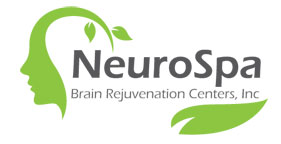Q: How do I start and how long does it take?
A: You have several options to get started. You may contact our office by calling our office, email us, or complete brief online form on the contact page.
Our team will evaluate your information and invite you for an initial consultation with neurologist. If convenient for you, you can start the diagnostic tests, i.e. brain mapping and quantitative EEG testing on same day as your initial evaluation and consultation with neurologist. We encourage you to bring family members or close friends to your initial consultation with neurologist and discussion.
Brain Mapping usually takes 20-30 minutes in the office. The results are then carefully analyzed in detail by our team of professionals (neurologists, neurophysiologists, neuropsychologist, neuro-radiologist) who then tailor an individualized treatment plan within 1-2 business days or less. Our staff will then contact you to discuss and set-up your treatment plan. Duration and frequency of treatments vary for each individual and can be as short as 10 days or as long as 30 days. Our office will schedule treatments based on your schedule and treatment guidelines as recommended by team.
Q: How is progress measured?
A: We use the same precise brain-mapping and other objective measures used at your baseline evaluation to measure progress during the treatment phase. Progress checks are done periodically as determined by your team.
Q: What is the success rate?
A: Based on research studies, significant improvement and/or resolution of symptoms is achieved in more than 90% of individuals when all the recommended treatment modalities are followed.
Q: What is Peak Athletic Performance enhancement?
A: At Neurospa, we have the technology to help athletes outperform their competition by maximizing focus, attention, speed of processing, visual guidance, …etc. We use several modalities including rTMS, NeuroTracker 3-D Object Tracking,and Neurofeedabck that have been proven to be helpful for NFL, NHL, and other national league athletes. This technology can also help children or young adults in their sports careers.
Q: What is ‘on-label’ versus ‘off-label’. What does this mean?
A: While some of the TMS treatments are safe and efficacious, the FDA has labeled only ‘drug-resistant’ depression as ‘on-label’. Other conditions are considered ‘off-label’. Treatments are considered ‘on-label’ when the FDA approves treatment of a specific diagnosis. ‘Off-label’ indication by FDA means that the particular diagnosis in question has not been officially established by the FDA for treatment. For example, even though aspirin is used ‘off-label’ for treatment of many disorders such as heart disease, aspirin is not in fact officially approved as ‘on-label’ for treating heart disease despite its safety and efficacy.
All treatments follow specific well-studied protocol and have extensive clinical research proving safety and efficacy.

